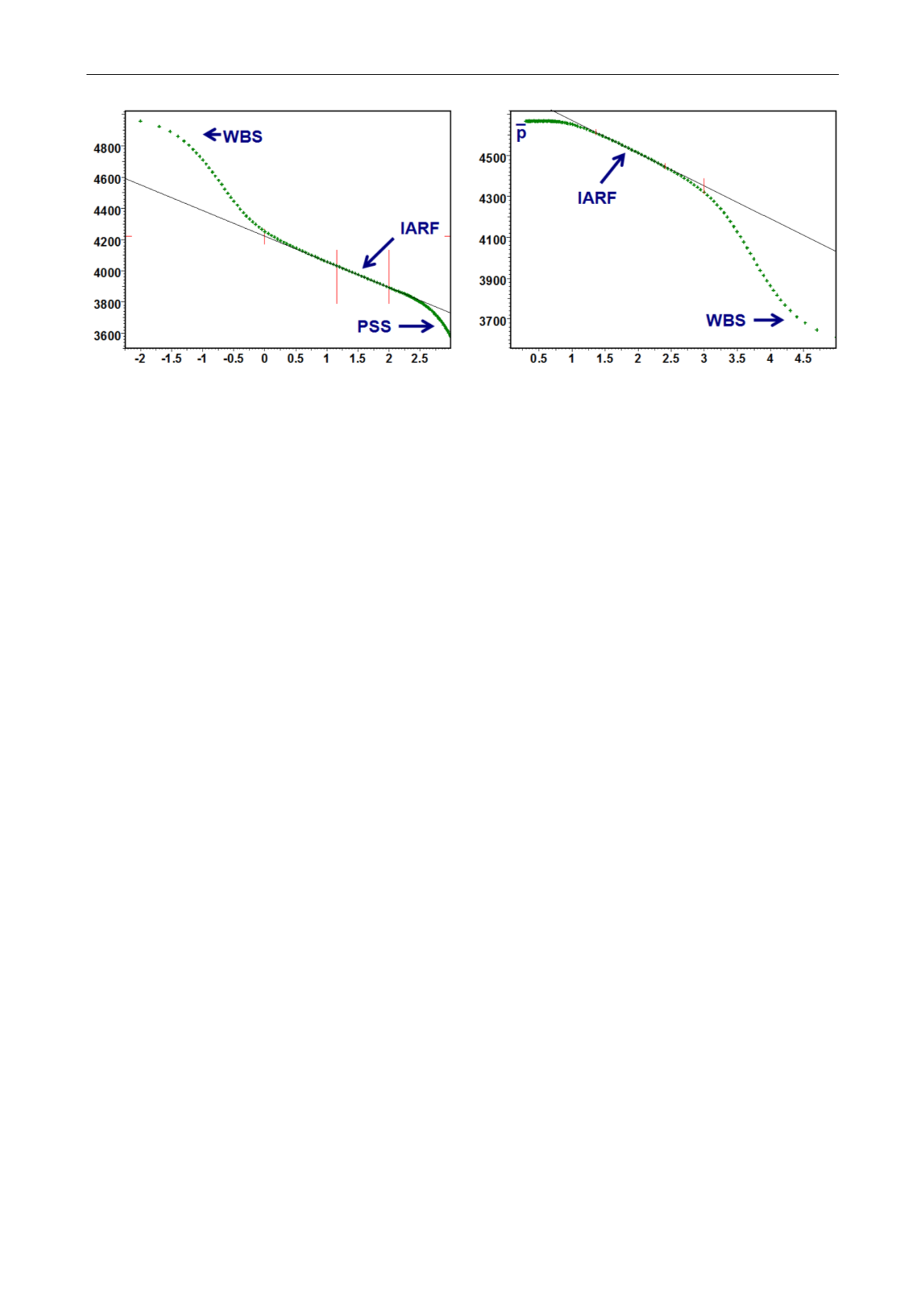

Dynamic Data Analysis – v5.12.01 - © KAPPA 1988-2017
Chapte
r 2 – T heory- p37/743
Fig. 2.H.2 – Semilog plot (drawdown) and Horner plot (buildup)
As developed in the PTA chapter we can observe the following:
The early time hump of the derivative is the transition between pure wellbore storage
(early time unit slope; the magnitude of the hump is the skin).
Infinite Acting Radial Flow (IARF) corresponds to the stabilization of the Bourdet derivative.
At late time, the production (drawdown) period shows a unit slope corresponding to
Pseudo-Steady State, whilst during the shut-in the pressure stabilizes at the average
pressure and the derivative takes a dive (also see the chapter on ‘Boundary models’).
In the following we are focusing on the production (drawdown) and study the effect caused by
changes in both ‘known’ and ‘unknown’ parameters.
In this design we know ALL parameters. In the following, however, we will make a split
between ‘unknown’ and ‘known’ parameters. ‘Unknown’ parameters are those for which we
generally look for in a Pressure Transient or Rate Transient Analysis.
In the case of the simulated example, they are the wellbore storage coefficient, the skin factor,
the reservoir permeability and the radius of the circular boundary.
‘Known’ parameters are those we generally assume to be given as an input in order to
calculate the ‘unknown’ parameters from the analysis. Usually, they are r
w
, h,
, c
t
and
.We
will show how sensitive the response is to the ‘known’ and ‘unknown’ parameters, and how an
error in the estimation of such parameters will impact our analysis.
















